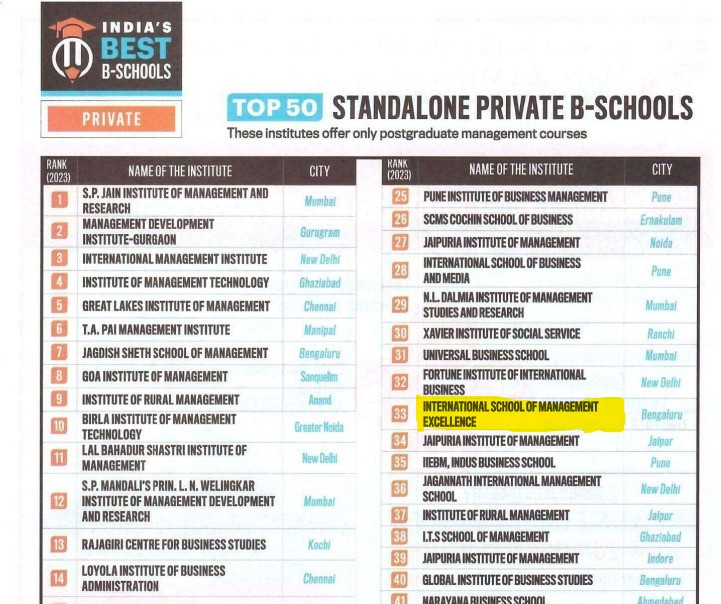Introduction
Earlier, I had written a blog on “How to write a good research paper”. Later, I realized that writing a good paper alone is not enough. Besides writing a good paper, two other things that are necessary are a) positioning the paper for the chosen journal and b) the tone of the article should match with the target journal. Before delving on the above two, I would also touch upon the quality of a good research paper to completeness to this blog. I have drawn on many sources for compiling this write-up and hence credit must go to the original authors/source.
Good paper
The first thing one notices about an article is its title. As per AIDA principal, unless the topic is attractive, one may not look any further. I have heard many editors talk about the importance of the topic of the study. No matter how well a paper is written, if its topic is appealing, it will in all probability stand rejected. The question then is how the topic should be that is suitable for a good journal. The editors of AMJ have named five requirements; they are significance, novelty, curiosity, scope, and actionability.
Significance: The first and foremost point to consider while selecting a topic is to see if it “confronts or contributes to a grand challenge” (Colquitt & George, 2011). By grand challenge, the authors mean that the idea should be bold and coming out with not-so-common approach to tackle that idea.
Novelty: Most of the journals would surly look for novelty in topic. One of the ways to create a novel topic is to go for multi-disciplinary approach.
Curiosity: Moving away from the topic, to hold the attention of the reader, the manuscript needs to have something more than novelty. There should be mystery in the air to kindle curiosity of the reader like Agatha Christie novel do. Until you reach the last page literally, one would not know solve the mystery.
Scope: Scope stands for the length and breadth the study had covered. Has the study adequately sampled, in terms of relevant constructs, mechanisms and perspectives. Another word that nearly describes, though not fully is research rigour.
Actionability: The requirement of a good topic is that it should be actionable. How can managers use the finding in their day-to-day work? In other words, it should offer actionable insight for managerial practice.
Positioning the paper
Each journal has its own style and requirements. However, one needs to have a strong story line for the manuscript. Most of the ideas presented here is drawn from Tom Van Laer’s presentations and webinars that I attended. A story begins by describing a new idea without belittling other ideas. It would be better to build on the extant literature. One needs to highlight the contribution of the story and how it fills the missing part or parts. According to Tom Laer, one can design a position for the paper by a) Setting the scene, b) Stating the art and 3) Promising solutions.
Setting the scene: A story can start by describing the present situation or a phenomenon. Taking his example, in his paper titled “What Happens in Vegas Stays on TripAdvisor? A Theory and Technique to Understand Narrativity in Consumer Reviews”, he opens the story by saying “Sixty-nine percent of consumers indicate that they base their purchase decisions on online consumer reviews (Nielsen 2015)”.
Next, who should care about the situation. In his paper Tom states “In reviews, ordinary consumers (i.e. reviewers) write about purchases, and web hosting sites aggregate these evaluative texts into an organized format (emphasize by me).
Finally, why should they care? “These texts are therefore one of the most influential forms of word of mouth.
Stating the art: In stating the art, the article should describe i) what is known about the situation till now, and ii) what is unknown. In other words, the gap in our present knowledge should be brought out. For example, in his paper, Tom explains the gap as “Yet narrativity, or the extent to which a text tells a story (citation) remains an over-looked feature of reviews.”
Promising solutions: Here, the article should state how the paper is going to close the gap. Following is the quote from the paper: “We build a conceptual framework in which linguistics and cognitive psychology cross-fertilize this field of inquiry. … we aim to explain how reviews’ narrativity leads them to engage and persuade consumers.”
Besides the above, Tom Van Laer also suggests that, the manuscript should preferable have three objectives. He opines that two may too little and four may be too much. But this is not a hard and fast rule and one should take a balance judgement. And all this should find a place in the introduction itself or at least in the first 750 words. Beyond that. the reader may lose interest.
Tone of the paper
While all academic papers aim for clarity, evidence-based reasoning, and formal language, tone can vary depending on the paper’s purpose, discipline, and audience.
Tone of the paper can be thought of as “attitude” or voice. For example:
A research article in a scientific journal usually has a neutral, objective tone—focused on data and analysis.
A position paper or editorial might adopt a more assertive or persuasive tone, especially if you’re advocating for a particular viewpoint.
A literature review might sound more evaluative and comparative, weighing different perspectives.
In the humanities, tone can be more interpretive or reflective, while in engineering or medicine, it’s often precise and technical.
Following is the example of the topic “The integration of AI in higher education” written in different tones:
- Neutral tone for a research article: Recent studies indicate that artificial intelligence tools are increasingly being adopted in higher education settings.
- Assertive Tone for a or editorial or a opinion paper: The integration of AI in higher education is not just beneficial—it is essential.
- Evaluative and Comparative Tone for a literature review: While some scholars argue that AI enhances educational outcomes through adaptive learning platforms, others caution against overreliance on algorithmic decision-making.
- Interpretive Tone for an essay or reflective piece: The rise of AI in higher education prompts a deeper reflection on the evolving role of the educator.
In academic writing one should avoid the following tone:
- Avoid making broad generalizations (always and never).
- Avoid using over-sweeping adjectives (outstanding, obvious).
- Avoid using adverbs and /or qualifiers (really, clearly, a little, definitely).
- Avoid emotional language (It is heart-breaking that so many are starving).
- Avoid inflammatory language (Smith’s study was terrible, sickening, sad)
Conclusion
Any research should contribute either to the knowledge or to the practice. Choosing an appropriate topic should not be hurried to be repented later. Mind your tone of the paper; it should match with that of the target journal. Personally speaking, I believe that practice is the key to success. One has to read the re-read the manuscript at different times. This gives different perspectives under which one looks at one’s own work. This helps a lot (I won’t use the word definitely!).
Suggested assignments:
- “Measuring attitude of the students towards management education” How can one increase the scope of the article? What are limitation? How do scope and limitations differ?
- “Do pesticides promote or hinder sustainability in agriculture?” Write at least three sentence each for different tone discussed in the blog.



